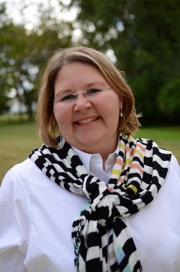INX Chemist Delivers “Best Paper” at RadTech Event
- Published: June 21, 2018
SCHAUMBURG, IL | INX International Ink Company analytical chemist Natasha Banke was recognized with an award for Best Paper at the RadTech 2018 Conference held in Chicago. More than 100 papers were submitted and previous company award winners include PepsiCo, Proctor & Gamble, and The Ford Motor Company.

Part of INX’s Research & Development group, Banke presented a paper about “Residual building block chemicals in raw materials and finished printing inks—a risk assessment approach to manufacturing and detection limits.” She discussed methodology and data regarding the detection of free BPA in raw materials and finished printing inks and compared findings and how they varied by country and governmental agencies. Banke delivered her report during a two-hour Printing + Packaging session on May 8.
“I’ve been fortunate to contribute and be a part of some interesting projects in the R&D analytical lab,” says Banke, who joined INX in 2015. “The BPA project marks a potential shift from formulating inks based on potential hazard based assessment, to formulating based on actual known risk exposure through the knowledge of knowing absolute amounts of BPA present in the raw materials.
“There is a beauty to projects that grow beyond the original objectives,” Banke adds. “By applying a risk-based assessment to potential hazards, we apply this knowledge to formulating inks, which can meet strict governmental guidelines and consumer expectations. We are looking forward to expanding this study through more vigorous raw material testing, as well as applying this methodology to other materials.”
Russell Szadowski, director analytical R&D for INX, says, “I am very proud of Natasha. She put a lot of effort into the project, and I want to thank all of the R&D employees who assisted and helped her prepare for the presentation. The goal with this project was to better quantify the levels of BPA in our raw materials so that we can confidently utilize them at levels that will not be greater than 100 ppt in the food. Currently, our vendors state that their limit of detection is 5 ppm. At that level, less than 10 percent of these raw materials—as the amounts would be additive—could be used and still remain under the 100 ppt level.”











